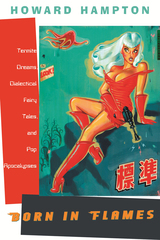
Twenty years as an outsider scouring the underbelly of American culture has made Howard Hampton a uniquely hard-nosed guide to the heart of pop darkness. Bridging the fatalistic, intensely charged space between Apocalypse Now Redux and Nirvana’s “Smells Like Teen Spirit,” his writing breaks down barriers of ignorance and arrogance that have segregated art forms from each other and often from the world at large.
In the freewheeling spirit of Pauline Kael, Lester Bangs, and Manny Farber, Hampton calls up the extremist, underground tendencies and archaic forces simmering beneath the surface of popular forms. Ranging from the kinetic poetry of Hong Kong cinema and the neo–New Wave energy of Irma Vep to the punk heroines of Sleater-Kinney and Ghost World, Born in Flames plays odd couples off one another: pitting Natural Born Killers against Forrest Gump, contrasting Jean-Luc Godard with Steven Spielberg, defending David Lynch against aesthetic ideologues, invoking The Curse of the Mekons against Fredric Jameson’s Postmodernism, and introducing D. H. Lawrence to Buffy the Vampire Slayer. “We are born in flames,” sang the incandescent Lora Logic, and here those flames are a source of illumination as well as destruction, warmth as well as consumption.
From the scorched-earth works of action-movie provocateurs Seijun Suzuki and Sam Peckinpah to the cargo cult soundscapes of Pere Ubu and the Czech dissidents Plastic People of the Universe, Born in Flames is a headlong plunge into the passions and disruptive power of art.
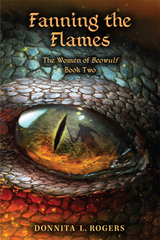
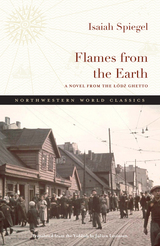
Flames from the Earth: A Novel from the Łódź Ghetto is an autobiographical novel written by Isaiah Spiegel, one of the most revered Yiddish authors to survive the Holocaust. Originally published in Israel in 1966, the novel brings together material that Spiegel wrote while imprisoned in the Łódź Ghetto, which he recovered from a cellar when he returned from Auschwitz after the war. The only works by Spiegel previously available to English readers have been short stories.
In this, his first novel, Spiegel explores a complex web of characters in and around the Łódź Ghetto: Vigdor and Gitele, lovers who are involved in the ghetto resistance movement; Nicodem, a Polish priest, who hides a member of the Jewish underground; Stefan Kaczmarek, a Polish tavern keeper who betrays Nicodem to preserve his own smuggling business; Franz Jessike, a Nazi guard who blackmails local Poles for personal gain; and Chaim Vidaver, the heroic leader of the ghetto resistance. Based largely on historical events, the novel’s lyrical style echoes its emotional intensity.
Gripping and atmospheric, Flames from the Earth honors daring acts of heroism and human connections forged amid unthinkable conditions. Spiegel’s novel represents an important contribution to the archive of literary depictions of historical trauma.
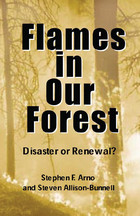
Shaped by fire for thousands of years, the forests of the western United States are as adapted to periodic fires as they are to the region's soils and climate. Our widespread practice of ignoring the vital role of fire is costly in both ecological and economic terms, with consequences including the decline of important fire-dependent tree and undergrowth species, increasing density and stagnation of forests, epidemics of insects and diseases, and the high potential for severe wildfires.
Flames in Our Forest explains those problems and presents viable solutions to them. It explores the underlying historical and ecological reasons for the problems associated with our attempts to exclude fire and examines how some of the benefits of natural fire can be restored Chapters consider:
- the history of American perceptions and uses of fire in the forest
- how forest fires burn
- effects of fire on the soil, water, and air
- methods for uncovering the history and effects of past fires
- prescribed fire and fuel treatments for different zones in the landscape
Flames in Our Forest presents a new picture of the role of fire in maintaining forests, describes the options available for restoring the historical effects of fires, and considers the implications of not doing so. It will help readers appreciate the importance of fire in forests and gives a nontechnical overview of the scientific knowledge and tools available for sustaining western forests by mimicking and restoring the effects of natural fire regimes.
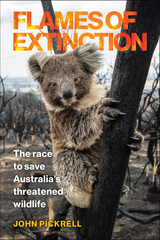
As news of the fires spread around the world, journalist John Pickrell was inundated with requests for articles about the danger to Australia’s wildlife. The picture seemed grim, from charred koalas to flames that burned so hot not even animal skeletons remained. But Pickrell’s reporting exposed a larger picture of hope. Flames of Extinction tells the story of the scientists, wildlife rehabilitators, and community members who came together to save wildlife and protect them in the future.
As climate change intensifies and devastating wildfires become more commonplace, Australia’s Black Summer offers a poignant warning to the rest of the world. Through evocative and urgent storytelling, Flames of Extinction puts readers on the ground to witness the aftermath of one of Australia’s greatest tragedies and inside the inspiring effort to save lives.
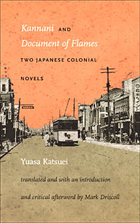
In his introduction, Mark Driscoll provides a nuanced and engaging discussion of Yuasa’s life and work and of the cultural politics of Japanese colonialism. He describes Yuasa’s sharp turn, in the years following the publication of Kannani and Document of Flames, toward support for Japanese nationalism and the assimilation of Koreans into Japanese culture. This abrupt ideological reversal has made Yuasa’s early writing—initially censored for its anticolonialism—all the more controversial. In a masterful concluding essay, Driscoll connects these novels to larger theoretical issues, demonstrating how a deep understanding of Japanese imperialism challenges prevailing accounts of postcolonialism.

Epitomizing the radiating sun and perpetuating the cycles of life and time, fire was—and continues to be—a central force in the Mesoamerican cosmos. Mesoamericans understood heat and flames as animate forces that signified strength and vitality; the most powerful of individuals were embodied with immense heat. Moreover, fire was transformative: it was a means to destroy offerings as well as to transport offerings to otherworldly places. The importance of heat and flames is evident in a spectrum of ritual practices, ranging from the use of sweat baths to the burning of offerings. Human bodies were among the most valuable resources heated or consumed by fire.
This volume addresses the traditions, circumstances, and practices that involved the burning of bodies and bone, to move toward a better understanding of the ideologies behind these acts. It brings together scholars working across Mesoamerica who approach these dual themes (fire and the body) with different methodologies and interdisciplinary lenses. Each contributor illuminates the deeper levels of Mesoamerican ritual practice in light of these themes, while highlighting what is unique to each of the societies that shared Mesoamerican territories.
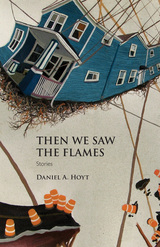
Sometimes magical, sometimes realistic, sometimes absurd, these stories reveal people teetering on the dangerous edge of their lives. In "Amar," a Turkish restaurant owner deals with skinheads and the specter of violence that haunts his family. In "Boy, Sea, Boy," a shipwrecked sailor receives a surreal visitor, a version of himself as a child. In "The Collection," a father and son squander a trove of bizarre and fanciful objects. And in "The Kids," a suburban couple grasp for meaning after discovering children eating from their trash.
In each of these stories, characters find themselves challenged by the political, cultural, and spiritual forces that define their lives. With a clear eye and a steady hand, Hoyt explores a fragile balance: the flames—fueled by love, loss, hope, and family—shed new light on us. Sometimes we feel warmth, and sometimes we simply burn.
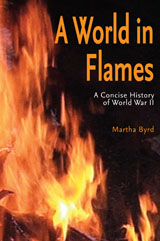
Who did what in World War II, and where and when did it take place?
READERS
Browse our collection.
PUBLISHERS
See BiblioVault's publisher services.
STUDENT SERVICES
Files for college accessibility offices.
UChicago Accessibility Resources
home | accessibility | search | about | contact us
BiblioVault ® 2001 - 2024
The University of Chicago Press









